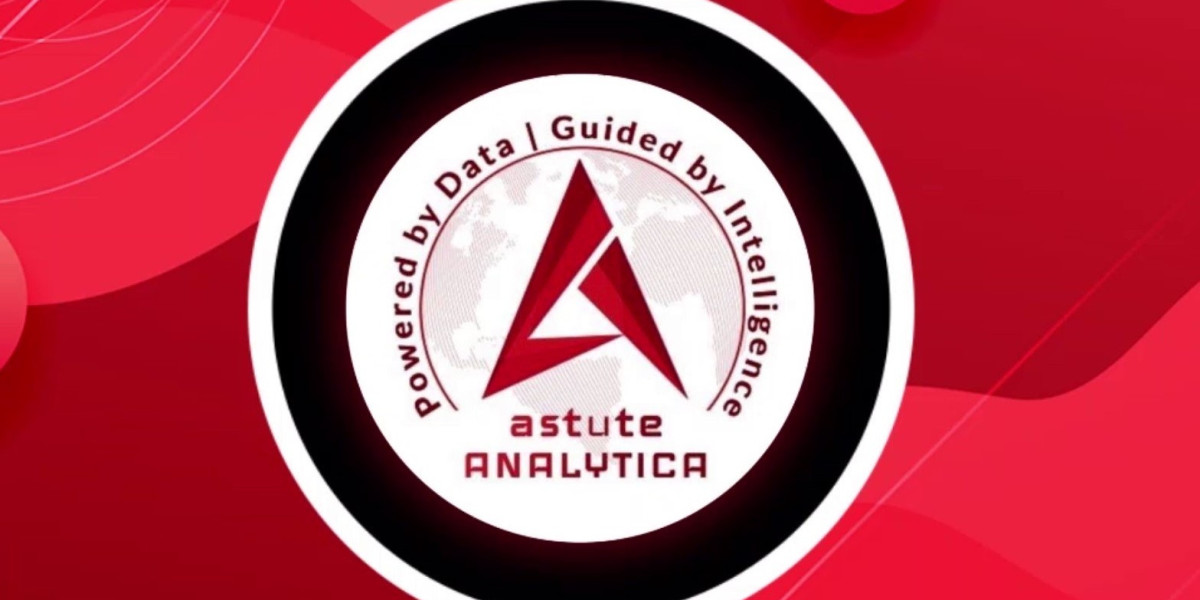The supply chain industry is undergoing a significant transformation, driven by technological advancements and evolving market demands. Germany's SAP was the leading supply chain management software supplier with revenue of around 4.4 billion U.S. dollars. According to a report by Grand View Research, the supply chain tech market size is as follows:
- Market size value in 2023 - USD 23.26 billion
- Revenue Forecast in 2030 - USD 48.60 billion
- Growth rate - CAGR of 11.2% from 2024 to 2030
As we are close to move into 2025, various technologies are reshaping how businesses manage their supply chains, from improving efficiency to enhancing transparency and sustainability.
Drivers for Growth:
- Rising demand and awareness of SCM solutions.
- Benefits of SCM software, including transportation management, analytics, inventory management, and waste minimization.
- Increased adoption of information technology and technical breakthroughs.
Challenges:
- Lack of IT infrastructure in developing countries.
- Security and privacy concerns.
What is Supply Chain Tech?
Supply chain technology encompasses a range of digital tools and solutions designed to optimize and streamline the various processes involved in supply chain management. These technologies include software platforms for logistics management, tools for inventory optimization, and innovative solutions leveraging AI, IoT, and blockchain. By integrating these technologies, companies can achieve greater visibility, efficiency, and agility in their supply chains.
Market Size and Leading Countries
The global supply chain tech market is witnessing robust growth, with North America, Europe, and Asia-Pacific leading the charge. According to a report by Allied Market Research, the supply chain analytics market alone is expected to reach $10.7 billion by 2025, highlighting the increasing reliance on data-driven decision-making in supply chain operations.
Key Trends in Supply Chain Tech and 2024 at a Glance
As we look ahead to 2024, several key trends are set to dominate the supply chain tech landscape. These trends reflect the industry's ongoing efforts to leverage technology for enhanced efficiency, resilience, and sustainability.
- Artificial Intelligence (AI) and Machine Learning
What It Is: AI and machine learning algorithms analyze vast amounts of data to optimize supply chain operations.
Why Needed: AI enhances demand forecasting, inventory management, and logistics planning.
Regional Trends: Strong adoption in North America and Europe, with growing interest in Asia-Pacific.
Example: IBM's Watson Supply Chain utilizes AI to predict disruptions and recommend mitigation strategies.
- Blockchain Technology
What It Is: Blockchain provides a decentralized and secure ledger for recording transactions across the supply chain.
Why Needed: It enhances transparency, traceability, and security in supply chain operations.
Regional Trends: Significant adoption in North America and Europe, with increasing interest in Asia-Pacific.
Example: IBM Food Trust uses blockchain to trace the journey of food products from farm to table, ensuring safety and authenticity.
- Internet of Things (IoT)
What It Is: IoT involves interconnected devices that collect and transmit data in real time.
Why Needed: IoT enhances visibility and monitoring across the supply chain, improving efficiency and reducing risks.
Regional Trends: High adoption in North America and Europe, with rapid growth in Asia-Pacific.
Example: Maersk's Remote Container Management system uses IoT to monitor the temperature and humidity of containers in real time.
- Big Data Analytics
What It Is: Big data analytics involves processing large volumes of data to uncover insights and trends.
Why Needed: It improves decision-making, demand forecasting, and risk management.
Regional Trends: Strong presence in North America and Europe, with growing adoption in Asia-Pacific.
Example: SAP's Integrated Business Planning solution leverages big data analytics to enhance supply chain planning and execution.
- Autonomous Vehicles and Drones
What It Is: Autonomous vehicles and drones are used for transportation and delivery within the supply chain.
Why Needed: They increase efficiency, reduce labor costs, and enhance last-mile delivery.
Regional Trends: Leading adoption in North America and Europe, with emerging interest in Asia-Pacific.
Example: Amazon's Prime Air uses drones for fast and efficient delivery of packages.
Key Technologies in Supply Chain Tech and Their Pros and Cons
Key Technologies in Supply Chain Tech and Their Pros and Cons
Supply chain technology is constantly evolving to meet the demands of modern businesses. Here are some key technologies in supply chain tech, along with their pros and cons:
- Internet of Things (IoT)
Pros:
- Real-time Tracking: IoT devices enable real-time tracking of goods and assets, providing greater visibility and control.
- Predictive Maintenance: IoT sensors can predict equipment failures before they occur, reducing downtime and maintenance costs.
- Improved Efficiency: Automated data collection and analysis lead to more efficient operations.
Cons:
- Security Concerns: IoT devices can be vulnerable to cyber-attacks, requiring robust security measures.
- High Initial Costs: Implementing IoT technology can be expensive due to the cost of sensors and infrastructure.
- Complex Integration: Integrating IoT devices with existing systems can be challenging.
- Artificial Intelligence (AI) and Machine Learning (ML)
Pros:
- Demand Forecasting: AI and ML can analyze vast amounts of data to predict demand more accurately.
- Process Automation: AI can automate repetitive tasks, freeing up human resources for more strategic activities.
- Enhanced Decision-Making: AI provides insights and recommendations, aiding in better decision-making.
Cons:
- Data Dependency: AI systems require large amounts of data to be effective, which can be a barrier for some companies.
- High Implementation Costs: Developing and deploying AI solutions can be costly.
- Skills Gap: There is a shortage of skilled professionals who can develop and manage AI systems.
- Blockchain
Pros:
- Transparency: Blockchain provides a transparent and immutable record of transactions, enhancing trust.
- Traceability: It enables end-to-end traceability of products, reducing fraud and improving compliance.
- Security: Blockchain's decentralized nature makes it highly secure against tampering and hacking.
Cons:
- Scalability Issues: Blockchain technology can struggle with scalability, particularly with high transaction volumes.
- Regulatory Challenges: The regulatory environment for blockchain is still evolving, which can create uncertainty.
- Complexity: Implementing blockchain requires significant technical expertise and can be complex.
- Robotic Process Automation (RPA)
Pros:
- Increased Efficiency: RPA automates repetitive tasks, increasing operational efficiency and accuracy.
- Cost Savings: Automation reduces the need for manual labor, leading to cost savings.
- Scalability: RPA solutions can be easily scaled to meet changing business needs.
Cons:
- Initial Setup Costs: The initial cost of setting up RPA can be high.
- Limited Flexibility: RPA is best suited for repetitive tasks and may struggle with more complex processes.
- Maintenance: RPA systems require regular maintenance and updates to function optimally.
Challenges and Benefits of Supply Chain Tech
Challenges
- Cybersecurity Risks: Increasing threats of cyberattacks and data breaches.
- Regulatory Compliance: Navigating complex regulatory environments.
- Integration Complexity: Integrating new technologies with legacy systems.
Benefits
- Enhanced Efficiency: Streamlines operations and reduces costs.
- Improved Visibility: Provides real-time insights into supply chain activities.
- Increased Agility: Enables quick responses to disruptions and changes in demand.
AI + Supply Chain Tech: Opportunities and Challenges
Opportunities
- Enhanced Risk Management: AI can predict and mitigate risks more effectively.
- Personalized Services: AI enables more tailored supply chain solutions.
Challenges
- Data Privacy: Ensuring the security of sensitive supply chain data.
- Algorithmic Bias: Avoiding biases in AI algorithms that could affect decision-making.
Dissecting Insights from Global Supply Chain Tech Case Studies
Case Study 1: IBM – Leveraging AI for Supply Chain Optimization
Introduction: IBM has been at the forefront of supply chain tech innovation, leveraging AI to enhance efficiency and resilience.
Journey and Technological Advancements: IBM's Watson Supply Chain uses AI to analyze data and predict disruptions, enabling proactive decision-making.
Product Strategy and Problem Solving: IBM focuses on providing integrated solutions that enhance visibility and efficiency across the supply chain.
Go-to-Market Strategy and Business Model: IBM's GTM strategy includes partnerships with leading supply chain companies and a strong focus on digital marketing.
Customer-Centric Marketing and Innovation: IBM uses customer success stories and case studies to highlight the benefits of its solutions.
Current Customer Base and Geographic Reach: IBM's supply chain solutions are used by companies globally, with a strong presence in North America and Europe.
Case Study 2: Maersk – Transforming Logistics with IoT
Introduction:
Maersk, a global leader in logistics, has integrated IoT to enhance visibility and efficiency in its operations.
Journey and Technological Advancements: Maersk's Remote Container Management system uses IoT to monitor containers in real time.
Product Strategy and Problem Solving: Maersk focuses on providing innovative logistics solutions that enhance efficiency and reduce risks.
Go-to-Market Strategy and Business Model: Maersk's GTM strategy includes strategic partnerships and a strong focus on digital marketing.
Customer-Centric Marketing and Innovation: Maersk uses customer success stories and case studies to highlight the benefits of its solutions.
Current Customer Base and Geographic Reach: Maersk's logistics solutions are used by companies globally, with a strong presence in North America and Europe.
Summing Up – So What’s Shorter Loop's Role in Supply Chain Tech?
Shorter Loop helps supply chain tech companies navigate these trends through advanced end to end product management software. Their AI-powered platform facilitates agile roadmaps, continuous discovery of products, solutions and markets through experimentations, business modelling, digital whiteboarding, and streamlined product management, making it one of the top product management software solutions in the market globally.
Customer Reviews of Shorter Loop
Before diving into the case study, let's look at what some of Shorter Loop's customers have to say:
- Camilla Ramberg: "Shorter Loop has transformed the way our teams collaborate and manage projects. The intuitive interface and seamless Jira integration have significantly improved our efficiency.”
Shorter Loop - Case Study (Supply Chain Tech Customer)
About the Company
One of the leading global supply chain tech companies, previously utilizing Microsoft Excel and MS Office for product management, faced numerous challenges in their efforts to streamline product management and enhance team collaboration.
Tools they were using before buying Shorter Loop: MS Excel, Google Sheets
Region: Global (India and USA)
Industry: Supply Chain Tech
Challenges
- No Streamlined Product Management: The company struggled with disjointed efforts in managing product development.
- Team Collaboration: There was a significant issue in communication and collaboration between product, development, design, leadership, marketing, and sales teams.
Solutions with Shorter Loop
Implementing Shorter Loop provided the company with comprehensive solutions that addressed their challenges effectively:
Crafting Holistic Roadmaps
- Unified Roadmap: Shorter Loop enabled the company to craft a holistic roadmap that tied business objectives and customer metrics on one page. Each department could now put their roadmap on a single platform, enhancing visibility and alignment.
- Flexible Intervals: Teams could now plan based on their requirements—sprint-based, monthly, quarterly, or using a now, next, and later approach. This flexibility allowed them to align their timelines with the overall business objectives and customer needs.
- Leadership and Team Views: The platform offered summary views for leadership, displaying key work items and team-wise summaries, as well as detailed views for engineering and other departments to understand the why behind each task. This dual view facilitated better alignment and understanding across teams.
Enhanced Collaboration and Integration
- Backlog to Roadmap: Creating a roadmap from the backlog became straightforward, with seamless synchronization with Jira. Each work item could be clicked to sync, making collaboration 50% more efficient.
- User Experience: The intuitive and clean UX of Shorter Loop required no training, ensuring immediate adoption and ease of use.
- Business Understanding: Development teams gained a deeper understanding of business objectives by seeing how their tasks impacted customer-centric metrics and business goals. Features and user stories now included information on customer feedback, brainstorming activities, impacted metrics, and alignment with the product vision and OKRs.
Tight Integration with Jira
- Cohesive Work: The tight integration with Jira ensured that status changes in Jira were reflected in Shorter Loop and vice versa. This cohesion ensured that product and development teams worked in harmony.
Metrics Dashboard:
- All Product Metrics in One page: The product metrics dashboard provided a comprehensive view of the customer journey before, during, and after launch, including feature usage, CSAT, website visits, customer acquisition, retention, engagement, installations, NPS, customer effort score, and more. Now taking right actions by seeing these metrics and planning further releases and enhancements to the products along with right campaigns to tap customers have become also easy.
Key Impact:
- Global Reach: The implementation of Shorter Loop had a significant impact on the company's global operations.
- Enhanced Alignment: The company saw improved alignment across all departments, with clear visibility into each team's roadmap and how it tied to overall business objectives.
- Increased Efficiency: Team collaboration improved by 50%, with easier roadmap creation, intuitive UX, and seamless Jira integration.
- Business Insight for Dev Teams: Development teams now had a clearer understanding of the business impact of their work, leading to more informed and customer-centric development processes.
- Comprehensive Metrics: The detailed metrics dashboard provided valuable insights into customer behavior and product performance, enabling data-driven decision-making.
Frequently Asked Questions
1. What challenges were the supply chain tech company facing before using Shorter Loop?
The company struggled with uncoordinated product management efforts, poor team collaboration, and ineffective communication between various departments such as product, development, design, leadership, marketing, and sales.
2. How did Shorter Loop address the company's product management challenges?
Shorter Loop provided a streamlined solution that allowed for a holistic roadmap tying business objectives and customer metrics in one page, facilitating better alignment across departments.
3. What are the benefits of having a holistic roadmap with Shorter Loop?
Different departments can see each other’s roadmaps and align their efforts with the overarching business objectives and customer needs. This fosters better collaboration and strategic planning.
4. How does Shorter Loop's integration with Jira enhance productivity?
The seamless integration allows for real-time synchronization between Jira and Shorter Loop, ensuring that status updates and work items are consistently reflected across both platforms.
5. What improvements in team collaboration were observed with Shorter Loop?
Team collaboration improved by 50%, with easier creation of roadmaps, a straightforward and clean UX requiring no training, and better alignment on business objectives.
6. How does Shorter Loop help development teams understand the business impact of their work?
Developers can see how their work ties into customer-centric metrics and business metrics, including customer feedback, brainstorming activities, and overall product vision and OKRs.
7. What impact did Shorter Loop have on the company’s customer journey metrics?
The product metrics dashboard provided comprehensive insights into the customer journey before, during, and after launch, helping to track feature usage, CSAT, website visits, customer acquisition, retention, engagement, installations, NPS, and customer effort score.
8. How does Shorter Loop facilitate roadmap creation from backlog?
Shorter Loop makes it easy to create roadmaps directly from the backlog, allowing for efficient planning and prioritization of work items.
9. What flexibility does Shorter Loop offer in terms of roadmap intervals?
Teams can choose roadmap intervals based on their requirements, such as sprint-based, monthly, quarterly, or now-next-later views.
10. What view options does Shorter Loop provide for different teams?
Leadership can see a summary view (team-wise and key work item-wise epics), while engineering and other teams can access detailed views showing the why behind each task.
11. How did Shorter Loop help in creating a realistic MVP?
By enabling continuous discovery, realistic product creation was accelerated, helping the company deliver a market-fit MVP more efficiently.
12. What are the overall benefits of using Shorter Loop for supply chain tech companies?
Improved collaboration, streamlined communication, efficient roadmap planning, real-time Jira synchronization, and comprehensive product metrics tracking.
13. How easy is it to adopt Shorter Loop in an existing workflow?
Shorter Loop features a clean, user-friendly UX that requires no training, making it easy to integrate into existing workflows.
14. Can Shorter Loop help with strategic planning and execution?
Yes, Shorter Loop ties business objectives and customer metrics into one cohesive roadmap, aiding in strategic planning and execution.
Naijamatta is a social networking site,
download Naijamatta from Google play store or visit www.naijamatta.com to register. You can post, comment, do voice and video call, join and open group, go live etc. Join Naijamatta family, the Green app.
Click To Download


